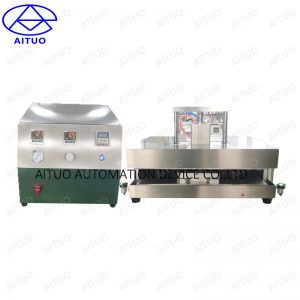A medical catheter machine is a specialized device that is used to produce catheters, which are medical devices that are inserted into the body for a variety of purposes, such as to provide access to the circulatory system or to drain fluids from the body. Catheters are made from a variety of materials, including silicone, polyurethane, and PVC, and can be produced in a range of sizes and configurations to meet specific medical needs.
The process of producing catheters typically involves a series of steps, including extrusion, cutting, and assembly. Extrusion is the process of melting the raw material and then forcing it through a die to create a tube of the desired size and shape. Cutting involves cutting the extruded tube to the appropriate length, and assembly involves adding any additional components, such as valves or connectors.
A medical catheter machine is designed to automate these steps, reducing the need for manual labor and increasing production efficiency. These machines typically consist of several components, including a material feeder, an extruder, a cutting mechanism, and an assembly station. The material feeder is used to supply the raw material to the extruder, which melts the material and forces it through the die to create the catheter tube. The cutting mechanism then cuts the tube to the desired length, and the assembly station adds any necessary components to the catheter.
There are several factors to consider when selecting a medical catheter machine, including the type of catheter being produced, the desired production rate, and the available budget. Different machines may be better suited for producing different types of catheters, such as those with complex shapes or specialized features. Additionally, machines with higher production rates may be more expensive but can increase production efficiency and reduce labor costs in the long run.
In addition to the basic components described above, many medical catheter machines also include advanced features that can further enhance production efficiency and product quality. For example, some machines may include sensors that monitor the extrusion process and adjust parameters such as temperature and pressure to ensure consistent quality. Others may include automated testing systems that can detect defects in the finished product and reject any faulty catheters before they leave the production line.
Despite the many benefits of medical catheter machines, there are also some potential drawbacks to consider. These machines can be expensive to purchase and maintain, and may require specialized training to operate effectively. Additionally, there is always the risk of machine malfunction or operator error, which can lead to defective products or production delays.
In conclusion, a medical catheter machine is a specialized device that is used to produce catheters for medical use. These machines can automate the process of extrusion, cutting, and assembly, reducing the need for manual labor and increasing production efficiency. However, selecting the right machine requires careful consideration of factors such as the type of catheter being produced, the desired production rate, and the available budget. Additionally, it is important to be aware of the potential drawbacks of using these machines, including their cost, maintenance requirements, and the risk of machine malfunction or operator error.



